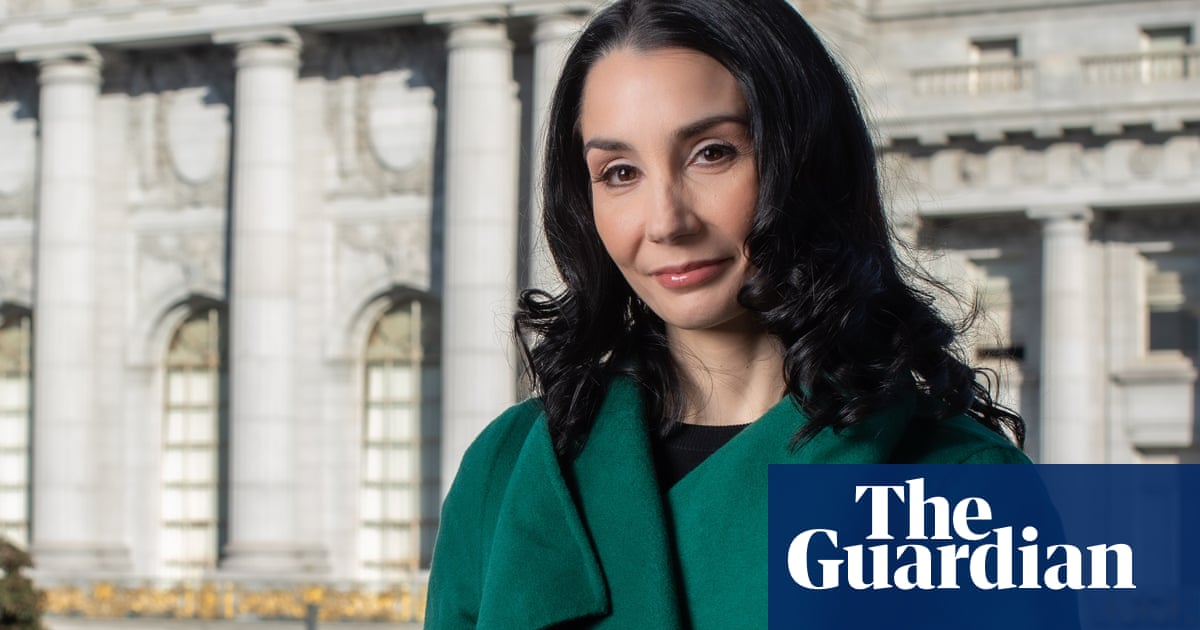
Tamara Rojo spent 27 years in London before moving to San Francisco just over a year ago. Apart from friends and the theatres, she doesn’t miss it at all. She has sunshine, the sea and a 10-minute walk to work (as opposed to a 90-minute commute). “I really love the city, it feels like home,” she says.
London misses her, though. The Spanish ballerina was an astonishing dancer with the Royal Ballet, then an impressive artistic director of English National Ballet and an important voice in lobbying for the arts. But in December 2022 she took up the role of artistic director at America’s oldest ballet company, San Francisco Ballet, after Helgi Tómasson’s 37 years at the helm.
Such is the long-lead planning of a ballet company that only now is she about to present her first season, with some notable British influences. We’ll come to that later, but how is she finding the difference between working in the UK and the US? “The obvious difference is the lack of public funding here,” she says, speaking over video call. San Francisco Ballet has to raise its funds from donors. “That takes a lot of your focus and time, to get buy-in from individuals.” But there’s a positive side, too. “I find it very inspiring to meet people who have been supporting the company for 40 or 50 years. It’s good for an artistic director to be in tune with the audience a bit more.”
In the UK, Rojo had found herself increasingly frustrated by what she calls “the loss of the original intention of the Arts Council, an arms-length concept where you support great art. And what that art is, is decided by artists.” In recent years she felt that funding had become more prescriptive, tied to outreach and education. “Which is great, and also our responsibility, but we’re good at that only as long as we’re great at art.”
The flipside is that in the US there’s less support for emerging artists, and for developing riskier projects, something Rojo is trying to increase at San Francisco Ballet. She’d like to involve the audience, though, sharing extracts or work-in-progress and getting feedback, like a TV pilot or test screening in film. “We’re competing with Netflix,” she says. “That’s the level of excellence and slick production values our audiences expect. We’re competing with Broadway, with Disney.”
Rojo has always been very involved in all aspects of running a company, not just artistic decisions. “Probably meddling,” she laughs. But she’s running a business, “and now I’m aware that if I fail in the business I can’t pay people’s wages”. As at ENB, Rojo will be balancing classical ballet heritage with forward-looking creations, and looking for stories that are relevant to San Francisco today, such as this season’s big premiere Mere Mortals, which is Pandora’s box reimagined as a story about artificial intelligence, asking what our curiosity could be unleashing.
“We’re doors away from Hayes Valley, the AI centre where it’s all happening,” says Rojo. The piece came about through meeting producer and composer Sam Shepherd, AKA Floating Points. His dancer girlfriend was performing with Rojo’s husband, Isaac Hernández (who has also joined San Francisco Ballet as a principal dancer). Rojo brought in Canadian choreographer Aszure Barton, whom she calls “completely underrated and an extraordinary choreographer”, and designers Hamill Industries, who work on Floating Points live shows. While the audience are in the theatre, the front of house will be transformed into a club – there will be a DJ and dancing till one in the morning. Will Rojo be on the dancefloor till 1am? She looks at me with a raised eyebrow. As if. “I don’t do things for me,” she says. She’s got a company to run. And a young son. There’s plenty on her plate. Rojo has even given up doing daily ballet class, and she doesn’t miss that either. It’s a sign that, turning 50 this year, she’s not planning to perform any more.
Elsewhere in the season there’s a commission from exciting young Cuban-born British choreographer Arielle Smith, who is making a new Carmen, retold from a female perspective. And Rojo is introducing some classics of the British ballet repertoire, two pieces she’s well known for performing: Kenneth MacMillan’s Song of the Earth and Frederick Ashton’s Marguerite and Armand. Rojo learned the dances from the original performers. “I feel that I can genuinely pass on the legacy,” she says, especially the realism of the British approach to acting, which Rojo mastered. “The subtlety of dramatic performance I think is unparalleled anywhere else in the world,” she says.
The subtlety of British diplomacy is something else Rojo mastered in London: “Saying, ‘very interesting, yeah, I’ll think about it’, when what you mean is ‘no’,” she laughs. By contrast she finds Americans earnest and forthright. What other qualities has she found in her dancers? “They have huge amounts of courage,” she says. “They are really open in the studio, not guarded at all. They are hungry for new experiences. And you feel that at every show they give it everything they have, and that’s very exciting.”
Mere Mortals is at San Francisco Ballet until 1 February; British Icons is on 9-15 February; Carmen is on 4-14 April.












